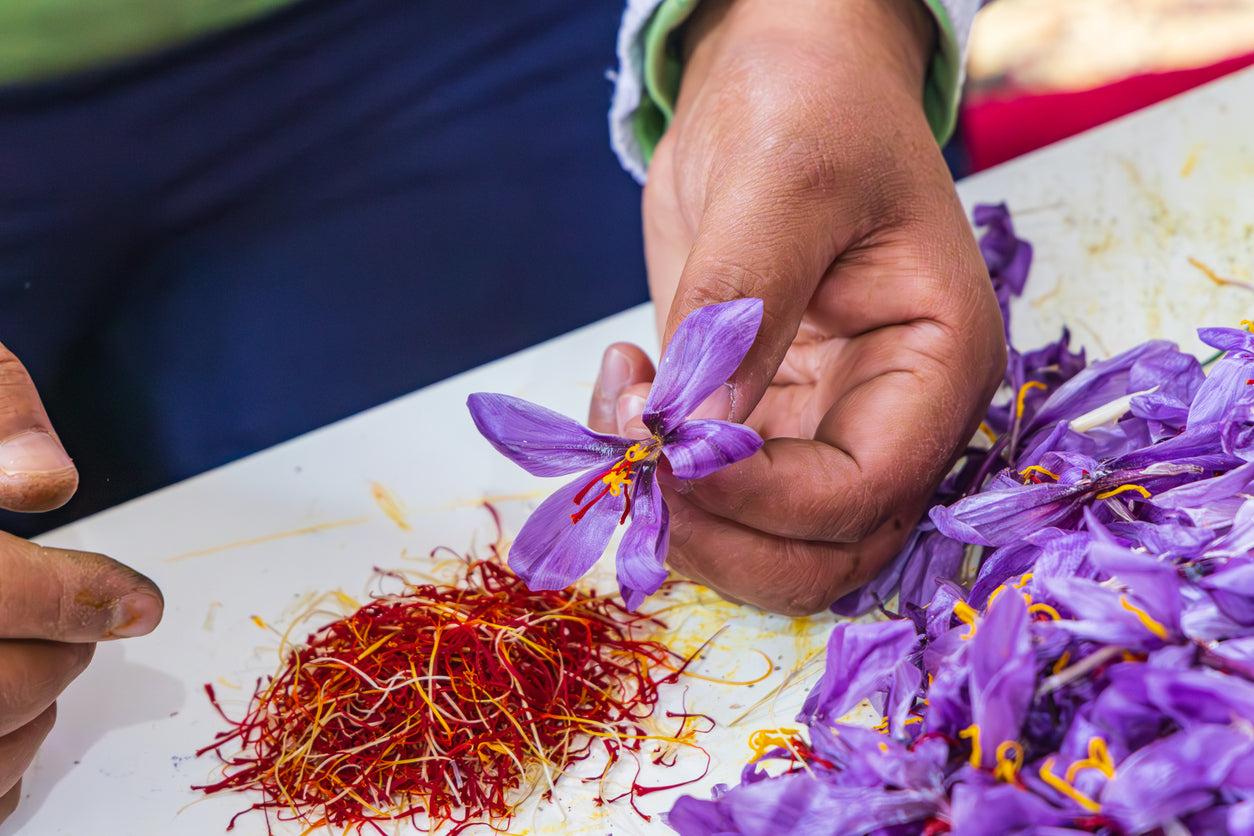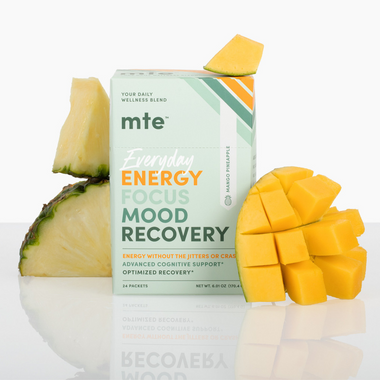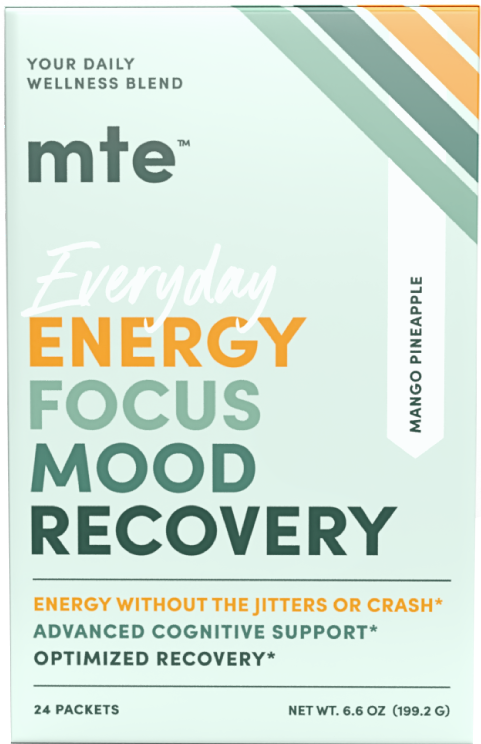
MTE: Spotlight on Saffron & How Plant Biology Interacts with Human Health
Ever wondered exactly what happens when you consume a nootropic drink with saffron? Sure, you may feel more energized, in a better mood, and less stressed. And you know it’s because the plant has bioactivity in the body. But what does that actually mean?
Unfortunately, some nootropics are more mysterious than others, and for some we don’t understand exactly what their bioactivity is. But not saffron. Saffron is one of the key nootropics in our caffeine-free alternative to energy drinks. It’s a great example of how nootropics might benefit health, because we know its biology interacts with ours.
For a history of saffron and in-depth look at the clinical research, check out: Saffron: Origins, History & Health Benefits.
Phytology & Physiology: What Makes Saffron a Nootropic?
Saffron is a small flowering plant native to Asia with a scientific name Crocus sativus. It’s been a part of culinary and medicinal culture for thousands of years, and today it’s still grown in many countries, though its purpose has largely been reduced to an insanely expensive herb.
The main compounds that make the saffron plant so bioactive are crocin, crocetin and safranal, all of which have shown evidence they can affect different biological processes in the body.
Crocin
First isolated in 1935, crocin is a carotenoid with a deep red color, and is the main contributor to the color of the stigmas of the saffron plant at 80% pigment dry weight.
Crocin makes up anywhere from 6-16% of the dry weight of saffron, depending on quality. Your body doesn’t actually use the crocin. Once it’s absorbed orally, it’s hydrolyzed into crocetin, which is then metabolized.
Crocetin
Crocetin is the other contributor to the red hue of saffron, and makes up about .3% of the dry weight of a saffron stigma. Crocetin is absorbed intestinally and directly metabolized. This carotenoid is largely responsible for the aroma and flavor of saffron.
Safranal
Safranal is a volatile aldehyde that plays a major role in the unique and complex scent of saffron. Along with croc(et)ins, safranal is thought to be a main reason for saffron’s touted health benefits. Higher quality saffron smells stronger – that’s the safranal. Typically, safranal accounts for 2-7% of saffron dry weight, depending on quality.
Where’s the Evidence Saffron These Compounds Do Anything?
So, besides smelling weird and being a pretty red color, is there any science to say the biology of saffron interacts positively with ours? Yes; of course – that’s why we put it in MTE’s daily feel-good wellness powder.
A 2015 review of the literature on saffron’s claimed health benefits found:
Saffron May Be Neuroprotective
In Iran, saffron has been used to treat seizures for centuries. And in fact, recent studies in mice suggest that saffron is an effective anticonvulsant; it delayed onset of seizures and protected mice from seizure-induced death. Interestingly, they observed this anticonvulsant effect to be a result of safranal’s activity but not crocin’s.
In other mice studies on neurodegenerative disorders, a daily saffron drink showed the ability to reduce the effects of and damage caused by the neurodegeneration. This time, the effects were attributed to crocetin.
Saffron Has the Potential to Protect Cognitive Health
In a clinical study on saffron’s potential to improve cognitive health, patients with mild to moderate Alzheimer’s were given saffron supplements using the same dosage and schedule as a commonly prescribed pharmaceutical. In one study, saffron showed the same efficacy as this medication, and in another study, patients taking saffron scored significantly higher on cognitive functions than placebo.
Saffron May Benefit Mood & Mental Health
It’s well-established that saffron improves low mood and motivation in mice, and clinical studies seem to support that concept. One study observed 6 weeks of saffron supplements improve mood on a statistically significant level compared to placebo.
Another study saw saffron benefit people with chronic low mood and MDD at the same level as a common medication. That’s why many mood-supporting drinks today include saffron.
Saffron Studies Suggest a Strong Antioxidant Effect
Several rat and mice studies have looked at key biological markers that indicate oxidative damage and neurotoxicity. Unfortunately, at the time of this review, there weren’t any clinical studies to be found on this specific mechanism of saffron.
However, in these animal studies, saffron supplements did some pretty cool things, including reducing the toxic effects chronic stress takes on the body and brain. Researchers also observed specific protective effects on a key brain structure that controls learning and memory.
These results were seen both with saffron and isolated crocin, suggesting the antioxidant effects of saffron are likely from the croc(et)ins.
Saffron Has Potential as an Anti-Inflammatory
Saffron may also protect the body from stress-induced damage by acting on inflammatory pathways. These studies were carried out with crocin supplements. They observed a reduction in inflammatory signalers and harmful chemical byproducts of neuroinflammation. As well, crocin supplements have been associated with reduced inflammatory gene expression and markers of cellular stress in the CNS.
Saffron May Promote Feel-Good Energy
Studies exploring the effects of saffron on neurotransmitters in the brain looked at concentrations and activity of different neurochemicals following supplementing with saffron.
This nootropic was associated with raised levels of a neurotransmitter key in mood, memory and motivation without stimulating another neurotransmitter that plays a key role in stress response.
The crocin in saffron has also been linked to reduced adverse experiences during withdrawal without reducing motor control. Safranal has been observed to reduce the psychological effects of a common opioid, including time spent in a drug paired state.
MTE: Saffron is Just the Tip of the Feel-Good Iceberg
Pretty cool, right? A little piece of a pretty flower has all that potential to promote wellbeing from the inside out. Saffron is the perfect ingredient for a wellness supplement for mood you can actually feel working, which is just what we set out to do with MTE.
A caffeine-free energy powder comprised of 10 natural, high-potency adaptogens, nootropics and superfoods, our nootropic-stacked alternative to caffeine offers more than energy, including support for stress, gut health, mood, focus, recovery, and more.
Because why rely on caffeine, sugars and chemicals for an empty energy boost that only lasts a few hours when you could add a healthy daily habit that offers sustainable, even energy without caveats?
Ready to start feeling better with a well-balanced saffron supplement that supports your best wellness efforts? Try MTE.






